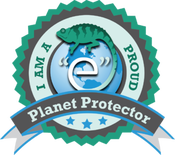|
by Brittany Tofinchio Palmer Ontario’s Ministry of Labour approved a new Noise Regulation under the Occupational Health and Safety Act (OHSA) on December 9, 2015. This regulation (O. Reg. 381/15) replaces the noise protection requirements set out in the regulations for Industrial Establishments, Mines and Mining Plants, and Oil and Gas-Offshore. It extends the noise protection requirements contained in the regulations below to all workplaces under OHSA. The Noise Regulation comes into effect on July 1, 2016.
Key changes include:
by Brittany Tofinchio Palmer New Zealand passed the Health and Safety at Work (General Risk and Workplace Management) Regulations 2016 in February 2016, effective on April 4, 2016. The regulations require the employer to identify hazards that could give rise to reasonably foreseeable risks to health and safety and set forth a hierarchy of control measures if it is not reasonably practicable for persons conducting a business or undertaking (PCBU) to eliminate risks to health and safety in accordance with the Health and Safety at Work Act 2015 (the Act).
Employer duties in relation to managing the following are set out below:
by Brittany Tofinchio Palmer China’s Standards Administration (SAC) has approved a recommended national standard that describes the phrases and hazard codes labels must carry. It comes into effect on January 1, 2017. The standard, GB/T 32374-2015: Phrase and Codification of Chemical Hazard Statements, was developed by the State Administration of Work Safety (SAWS) and is based on the fourth revised edition of the UN Globally Harmonized System of Classification and Labelling (GHS). It applies to the production, operation, use, storage, transport and disposal of chemicals.
The Standard will serve to supplement existing China GHS standards, especially the GHS labelling standard (GB 15258-2009) and the SDS preparation standard (GB/T 16483-2008 and GB/T 17519-2013). The SAWS released a draft version of the Standard in July 2013, for public consultation, which consisted mainly of the following three parts:
The finalized standard was approved jointly by the SAC and the General Administration of Quality Supervision, Inspection and Quarantine (AQSIQ) of China under Announcement No. 43 of 2015. This announcement approved a total of 287 National Standards, covering a wide ranges of requirements placed on chemicals, aerospace systems, information technology, and household products and other areas. by Brittany Tofinchio Palmer After several months, initial publication in the Federal Register, and after receiving comments, the EPA announced seven National Enforcement Initiatives for 2017-2019 on February 18, 2016. Four previous initiatives have been retained, two are new, and one previous initiative has been expanded. The Initiatives are as follows with the two new ones listed first:
1. Keeping industrial pollutants from entering the nation’s waters; 2. Reducing the risks of accidental releases at industrial and chemical facilities; 3. Reducing hazardous air pollutants; a. This initiative has been expanded by adding focus to large storage tanks and hazardous waste facilities. 4. Reducing air pollution from the largest sources; 5. Ensuring energy extraction activities are in compliance with environmental laws; 6. Preventing raw sewage and contaminated stormwater from entering the nation’s waters; and 7. Preventing animal waste from contaminating surface and groundwater. These Initiatives constitute the EPA’s top enforcement priorities for the next three years. Industry can expect increased enforcement in the above areas beginning October 1, 2016, when the new Initiative cycle begins. by Brittany Tofinchio Palmer China’s new Restriction of the Use of Hazardous Substances in Electrical and Electronic Products (RoHS II) regulation was issued on January 21, 2016 and is set to enter force on July 1, 2016. One of the main changes from China’s RoHS I regulation is the expansion of products from electronic information products to all listed electrical and electronic products with voltages not exceeding 1500 volts (V) direct current and 1000V alternating current. However, power generation, transmission, and distribution equipment is excluded from the definition. The same hazardous substances as in RoHS I will be subject to the regulation: cadmium and its compounds, mercury and its compounds, hexavalent chromium and its compounds, lead and its compounds, polybrominated diphenyl ethers, and polychlorinated biphenyls (PCBs). In addition, all electrical and electronic products will require one of two logos to accompany it depending on whether it contains any of the hazardous substances listed above. If no hazardous substances are present, a green symbol with arrows and an “e” in the middle of it will be used. If hazardous substances are present, the same style symbol but in orange will be used. The symbol will have a number in it as opposed to an “e”, indicating the number of years it can be safely used before needing to be recycled.
So what’s the difference between China’s new regulation and the European Union’s (EU) RoHS II regulation? There are several that are significant. The first is the scope of electrical and electronic products covered. China will eventually publish a list of specific products subject to regulation in a Compliance Management Catalogue, while in the EU, all electrical and electronic products are applicable and regulated unless specifically exempted. The second is markings whereby each regulation has specific logos or marks that must be used, but China has an additional provision that requires the names of the hazardous substances used in a product to be published in the product’s instructions. As far as compliance, in China, testing by a third party is required where the EU relies on self-declarations. The last main difference is the regulated restricted substances. The EU regulates the same six substances that China does, but the EU added four additional phthalates in 2015. |
Search Regulatory Compliance BlogBrowse by Topic
All
Browse Archives
January 2020
|

 RSS Feed
RSS Feed
